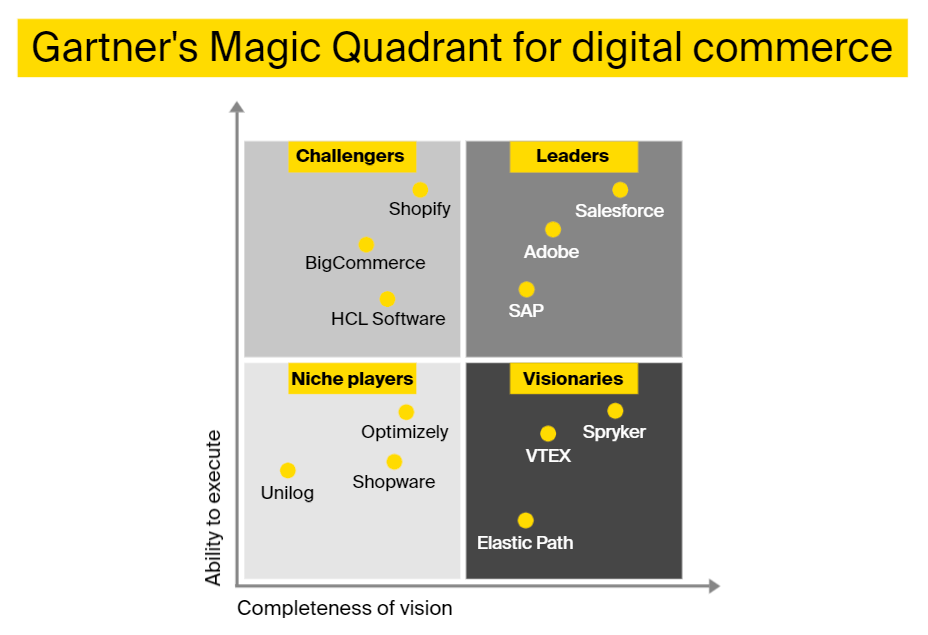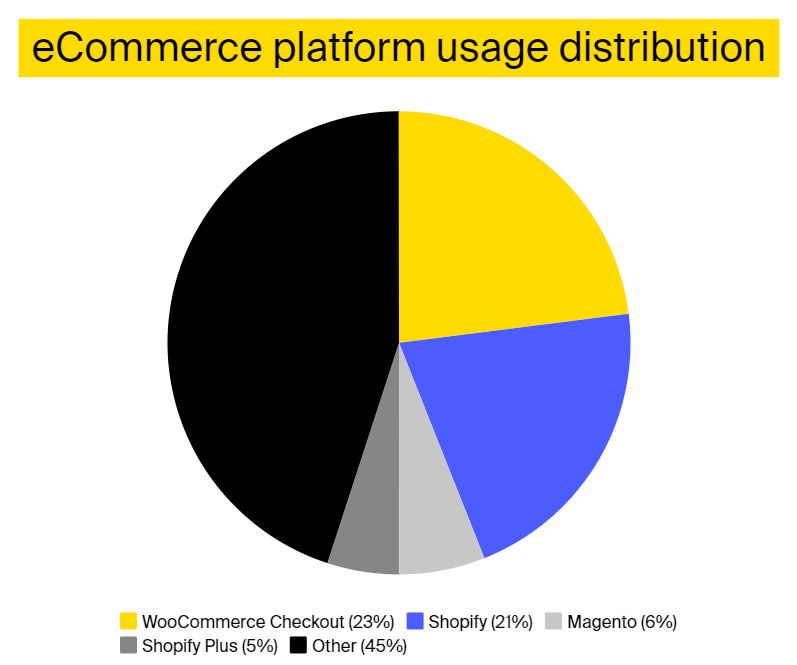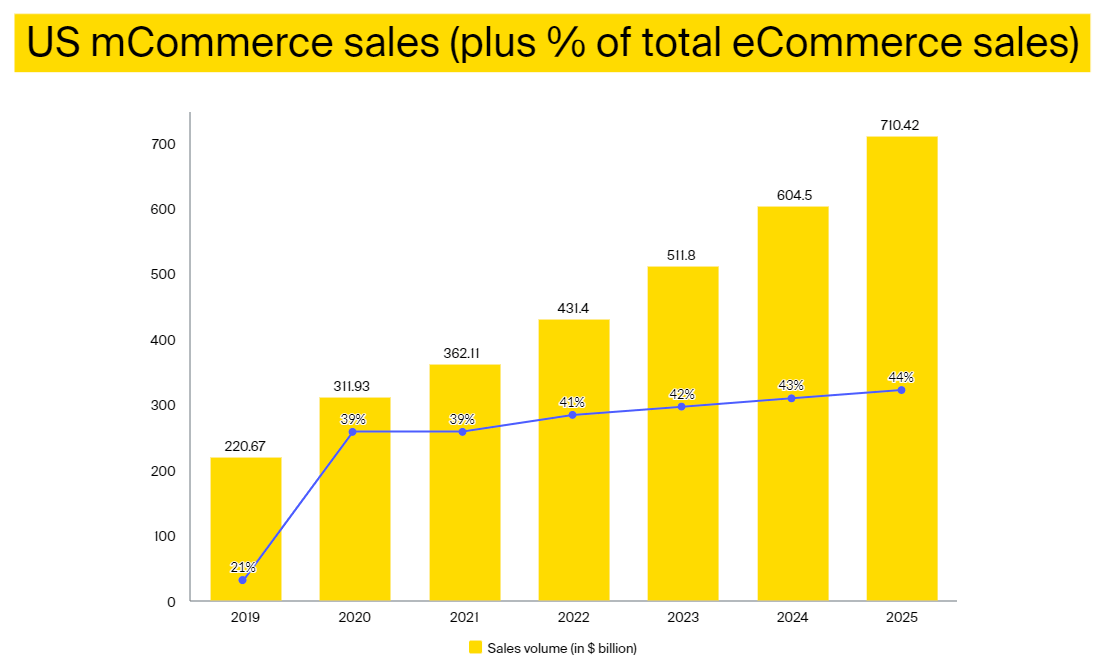Do you realize that 70% of Americans are shopping online? If you still don’t have an online store, you are losing this large audience.
Statistics show that when the market is facing rising inflation and declining demand, buyers still continue to shop over the Internet. According to Insider Intelligence, worldwide eCommerce sales are projected to surpass $7 trillion by 2025, accounting for 24.5% of all retail sales. For the sake of comparison, in 2021, eCommerce sales were valued at $4.9 trillion and formed only 19.6% of the total retail sales for that year.
Whether you are at the beginning of your eCommerce quest or you already have an online store and want to enhance and optimize it, finding the right eCommerce development service vendor is crucial. The market is flooded with eCommerce solutions. If you are looking for a platform that is popular, powerful, scalable, customizable, and yet affordable, Magento/Adobe Commerce is one of the few options.
So, what is Magento Adobe Commerce used for? Is it the right choice for your business? Maybe this piece will inspire you to get in touch with an Adobe Commerce development firm to embark on your eCommerce journey.
What is Adobe Commerce?
First of all, what is Magento?
Magento is an open-source eCommerce platform written in PHP and available for free download.
Magento was initially released in 2008. Its upgraded version, Magento 2.0, was introduced in 2015. Three years later, Adobe Inc. acquired the platform for $1.68 billion, officially changing its name to Adobe Commerce. After the acquisition, Magento’s free edition, Magento Community, was renamed to Magento Open Source. The enterprise version became Adobe Commerce, which is a powerful and scalable end-to-end eCommerce development platform. It allows retailers to build, optimize, and personalize online stores while controlling the entire customer journey.
An established consultancy firm, Gartner, recognizes Adobe Commerce as a leader in the eCommerce segment.

At the moment of writing this article, Adobe Commerce paves the foundation for over 150,000 online stores. According to Rolustech, the platform accounts for 12% of eCommerce shops worldwide and supports about 1.2% of the content management system (CMS) market. On top of that, Magento has a 7% market share in the top 1 million sites.

So, why Adobe Commerce? What makes this platform worth trying?
Adobe Commerce benefits
Here are six key benefits of Adobe Commerce.
Magento/Adobe Commerce is a powerful and feature-rich solution
Magento’s performance is comparable to its more pricy alternatives. The platform offers an extensive set of features, thousands of off-the-shelf extensions, and a solid network of tech partners ready to implement custom solutions.
Adobe Commerce’s capabilities include an intuitive user interface, detailed information on client accounts, and plenty of options to improve client service and support. And that’s not all! This platform offers advertisement and marketing tools, multiple payment options configuration, advanced analytics, and reporting capabilities. Moreover, it has artificial intelligence capabilities thanks to Adobe Sensei, Adobe’s AI and machine learning technology, which is integrated with Adobe Commerce. For instance, this AI can make personalized product recommendations based on user preferences and current trends.
Magento/Adobe Commerce is flexible
Every business is unique, and there is no one-size-fits-all solution. Magento recognizes this and allows you to take full control of your online store. Adobe Commerce enables retailers to set their personalized themes and customize every aspect of their business. For example, the Magento Page Builder extension allows store owners to create custom layouts and add content through its drag-and-drop interface without writing a line of code.
Another important factor is that Adobe Commerce has a strong community of users and developers who can share insightful ideas on how to improve online stores. When store owners face a problem, they can turn to these community forums for advice. And most likely, there will be a member who can share their experience on the matter.
Magento/Adobe Commerce is SEO-friendly
Search engine optimization (SEO) is essential if you want to reach a wider audience as fast as possible. To accommodate this, Adobe Commerce offers a range of SEO-oriented tools that empower online store owners to advance their sites in Google search rankings.
Magento’s built-in functionality includes SEO-friendly website URLs, product metadata, Google sitemaps, title tags, and more. Additionally, online store owners can create a blog and publish SEO-oriented articles that supply users with interesting content, while advancing the store’s position on Google.
Magento/Adobe Commerce is fast
Have you witnessed a client filling their shopping cart with multiple products just to abandon it before proceeding to checkout and exiting the store without spending a dime? Every online retailer dreads such behavior, especially since abandoning an online basket is easier than doing the same in a physical store.
Baymard research reveals that a whopping 70% of online shopping baskets are ditched without resulting in any conversions. Having a slow online store heavily incentivizes this behavior as, according to Kinsta, it can increase the percentage of abandoned shopping carts to 75%. Yet another study shows that if your web pages take longer than three seconds to load, the bounce rate will increase significantly. Hence, short loading time is crucial to retain customers and build a successful online business.
Fortunately, Adobe Commerce ensures high loading speed as the platform is fully customizable. It allows online store owners to tweak the settings to achieve optimal speed. This results in higher customer satisfaction, more purchases, and fewer abandoned shopping carts, as happy customers come back and bring their friends.
Magento/Adobe Commerce has a responsive design
There was a time when responsive design was a nice-to-have feature. This time is long gone. In today’s digital environment, responsive design is a must as it enables your online store to load equally well on desktop computers, PCs, smartphones, and tablets.
Research shows that more and more users prefer to shop online through mobile devices. The retail mobile commerce (mCommerce) sales in the US were valued at $362 billion in 2022, accounting for 41% of all eCommerce transactions. Purchases made through mobile devices are expected to exceed $710 billion by 2025, claiming 44% of all eCommerce retail sales in the US.
From the graph above, you can see that if your online store doesn’t support smartphone-based transactions, you are missing out on 42% of the market. And this percentage will only increase in the future.
Magento will make your eCommerce store accessible and convenient for users who prefer to shop on their smartphones. This platform offers multiple extensions and plugins that allow your store to adapt and accommodate different devices. With this functionality, users will always have access to a mobile-friendly version of your store that loads fast and offers a live chat option that mobile users appreciate so much.
Magento/Adobe Commerce enables you to operate multiple stores
Are you looking to build and run several eCommerce websites but are afraid you can’t have a firm grip on them all? Adobe Commerce has a solution. This platform allows you to maintain and control all your stores via one unified panel.
Furthermore, Magento can assist you in running online operations in several countries. It can support different currencies and languages, integrate with the corresponding taxation solutions, manage multiple warehouses, and much more.
Examples of companies that used Adobe Commerce to grow their business
Here are examples of retail companies trying to revamp their online stores with Adobe Commerce, and the results they achieved.
- Rossignol. The French manufacturer of snowboarding and alpine equipment turned to Adobe Commerce to unify their scattered brands operating on different backend systems. The company tested this integration on its performance mountain bike line and sold 25% more products online than expected. After this success, Rossignol relied on Adobe Commerce to expand internationally. They deployed the Owebia extension to define shipping rules for each country and Hipay to facilitate payment. As a result of its efforts, the firm achieved a 70% increase in conversion.
- Killer Ink. The leading European tattoo equipment supplier upgraded their Magento 1 integration to Adobe Commerce to enhance their online store’s performance and penetrate international markets.
- With this upgrade, Killer Ink could dynamically configure promotions based on a client’s location and support seven payment methods. Their online store integrates with couriers, such as UPS and Royal Mail, and accommodates a multi-stock inventory system. With these and other changes enabled by Adobe Commerce, Killer Ink increased its overall revenue by 59%, while boosting its mCommerce revenue by 96%
- Byredo. A luxury fragrance producer and retailer based in Stockholm switched to Magento hoping to optimize their content and increase customer engagement. As a result of this move, the company boosted its conversion rate by 30% and their average order value (AOV) by a staggering 160%.
- Shoebacca. This American online footwear retailer was looking for a platform that can handle their sales across multiple channels, manage pricing, inventory, and shipping, and offer a high degree of customization. Adobe Commerce gave Shoebacca responsive design that allowed users to access their online store from almost any device. Their AOV rose by 50% while online sales and traffic increased by 25%.
- Here is how Thomas Finney, the CTO of Shoebacca, described the role of Adobe Commerce in revamping his online business, “Adobe Commerce was a key factor in our 15x revenue growth in just three years.“
- Marc Fisher Footwear. This is an example of yet another American footwear company using Adobe Commerce. Marc Fisher wanted to leverage the multi-tenant Adobe Commerce feature to house three online stores – their own, and the two brands that they recently acquired – Easy Spirit and Nine West.
- After migrating all three web stores to a unified platform, the company experienced a 10% revenue boost and a 24% increase in conversions. What’s more, they managed to cut the time wasted on front-end updates by 70%.
Concluding thoughts
After seeing what Adobe Commerce is capable of, are you convinced it’s the right platform to support your eCommerce initiatives?
If not, we are ready to answer any questions you might still have.
If yes, our custom retail software development team will be happy to assist you in building and/or transforming your online store(s). We realize that every business is unique, and will leverage Magento’s customization options to tailor to your needs.
With Adobe Commerce, your store will have a custom design and layout reflecting your taste and sense of fashion. Your webpages will load fast and will be accessible via smartphones, tablets, and other devices, enhancing user experience. Thanks to Magento’s SEO capabilities, people will easily find your store, as it will appear at the top of Google search results.
Do you want to build an online store? Or maybe you have one but it doesn’t meet your expectations? Drop ITRex Group a line! We will make sure your store has an attractive layout, its images load fast, and users can easily find it on Google and access it with any popular device.
The post What Is Adobe Commerce, and How It Benefits Retailers appeared first on Datafloq.


